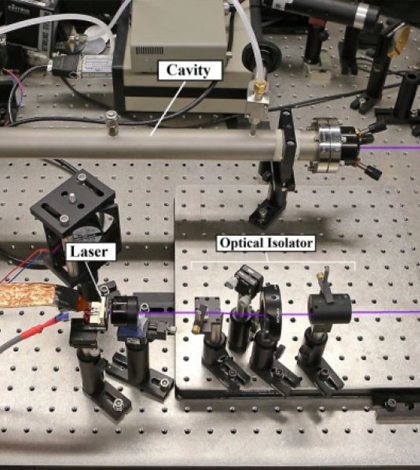Improvements In Cavity Ring-Down Spectroscopy: Better Gas Detection

Experimental setup for ultrasensitive real-time trace gas sensor using a high power multimode diode laser and cavity ringdown spectroscopy. (Credit: Adelphi University)
Cavity ring-down spectroscopy (CRDS) hasn’t been widely used in environmental monitoring applications because of its susceptibility to vibrations, which can greatly reduce its sensitivity. While a lab environment may be vibration-free, it’s unlikely in the field where vibrations can occur due to any number of factors, including passing cars and air currents.
A team of scientists from Adelphi University, however, has found a way of correcting the technique for vibrational effects, meaning CRDS could be deployed into the field as a means of ultra-sensitive detection of nitrogen dioxide and other gases for the first time.
Using a high-powered broadband laser, the scientists were able to show that if the laser and cavity resonance used in CRDS experienced vibration, the resonance of the cavity used in the ring-down time would shift to the resonance of one of the other wavelengths the broadband laser was emitting, stabilizing the reading.
Use of the new CRDS method could be faster and more sensitive than the current method. It could potentially be used to measure ultra-low levels of nitrogen dioxide and other gases like methane, ammonia and sulfur dioxide, all important pollutants.
Top image: Experimental setup for ultrasensitive real-time trace gas sensor using a high power multimode diode laser and cavity ringdown spectroscopy. (Credit: Adelphi University)




0 comments